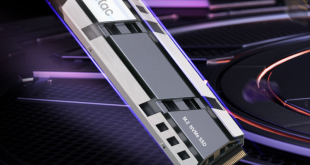Metro: Last Light takes place one year after the events of Metro 2033, proceeding from the ending where Artyom chose to call down the missile strike on the Dark Ones. The Rangers have since occupied the D6 military facility, with Artyom having become an official member of the group. Khan, the nomad mystic, arrives at D6 to inform Artyom and the Rangers that a single Dark One survived the missile strike. 4A Games’ proprietary 4A Engine is capable of rendering breathtaking vistas, such as those showing the ruined remnants of Moscow, as well as immersive indoor areas that play with light and shadow, creating hauntingly beautiful scenes akin to those from modern-day photos of Pripyat’s abandoned factories and schools.

We test this game with the built in benchmark with very high quality settings at 1920×1080 – details shown in the image above.

A very demanding benchmark – however we see the overclocked R9 290 cards putting in a good showing, right beside the reference 290X solutions.
Tags AMD R9 290 AMD R9 290 Review Asus R9 290 Asus R9 290 Direct CU II OC Asus R9 290 Direct CU II OC Review Asus R9 290 review Review
Check Also
KitGuru Advent Calendar Day 19: Win one of THREE Netac 1TB NVMe SSDs!
For Day 19 of the KitGuru Advent Calendar we have teamed up with Netac to give THREE lucky winners an SSD upgrade! Each winner today will receive a Netac NV150HK M.2 NVMe SSD.
 KitGuru KitGuru.net – Tech News | Hardware News | Hardware Reviews | IOS | Mobile | Gaming | Graphics Cards
KitGuru KitGuru.net – Tech News | Hardware News | Hardware Reviews | IOS | Mobile | Gaming | Graphics Cards



Why would they move the VRM sensor to a place that is going to report hot results? surely thats an engineer foobar?
Sapphire rule the AMD roost, because they always do a proper design – and they don’t make nvidia boards either.
I read this review as ASUS cut corners, and have a cooler which isn’t quite at the same level as their competitors. I love their motherboards, but wonder about some of their design decisions once they move to other products.
So the VRM temp sensor doesn’t actually reflect the VRM’s true temperature.
The Cooler itself doesn’t fully cover the gpu (3 of 5 pipes at best it looked like?)
And they are using poorer quality Elpida memory modules, which are well known to be a source of the black screen crashes on the 290 series cards, over the far more stable Hynix modules that sapphire/gigabyte/msi use?
And all of this comes at a serious price premium (£529.99 on ocuk atm vs £439.99 for the gigabyte and £449.99 for the msi versions, which both offer better hardware).
How is this an 8/10 card? Closer to 4/10 surely given the poor decisions made and the price point compared to rival cards.
Not sure where you are getting the prices from, its £389.99 http://www.overclockers.co.uk/showproduct.php?prodid=GX-334-AS&groupid=701&catid=56&subcat=1752.
Unless you are looking at the 290x cards and getting mixed up.
My bad, you’re right there.
Nevertheless, the rest stands for all versions of the 290’s, and it still sits at a ~10% price premium vs other cards of its type, while still having the same hardware flaws. It’s just more pronounced with the X version.